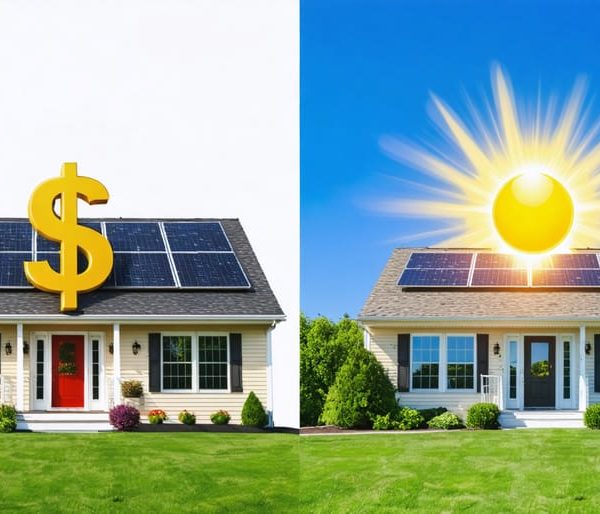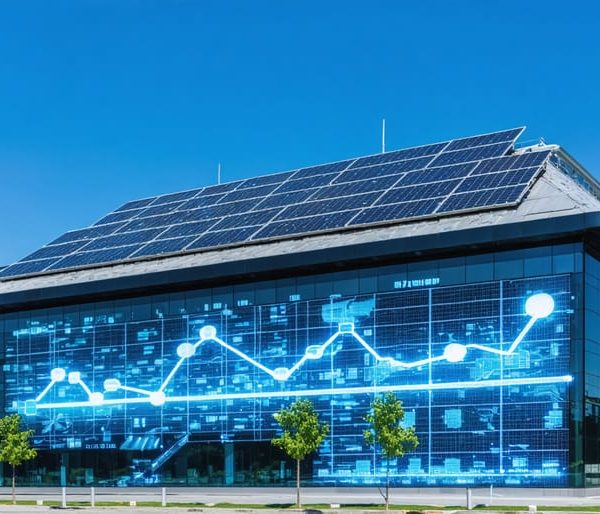Solar Panel Payback: What Real Homeowners Actually Earn From Their Investment
Solar panels deliver an impressive 10-15% annual return on investment for most homeowners, outperforming many traditional investment options while slashing monthly electricity bills by 50-90%. Installing a residential solar system typically pays for itself within 5-8 years, after which the energy generated represents pure savings for decades to come.
Modern solar technology has transformed from a costly environmental choice into a smart financial decision, with panel prices dropping 70% over the past decade while efficiency continues to climb. A typical 6kW home solar system now costs $15,000-$20,000 after federal tax credits, generating $1,500-$2,500 in annual energy savings depending on local sunshine and electricity rates.
This investment becomes even more attractive when considering rising utility costs, increased home value, and various state-level incentives. Properties with solar installations consistently sell faster and command 4.1% higher prices than comparable homes without solar, according to recent real estate data. Factor in the 26% federal tax credit available through 2022, and solar power emerges as a remarkably reliable path to both environmental and financial benefits.
Understanding Solar Energy Return on Investment
Initial Investment Costs
The upfront cost of solar panel installation typically ranges from $15,000 to $25,000 for an average residential system. This investment covers several key components: solar panels ($5,000-$9,000), inverters ($1,000-$2,500), mounting hardware ($500-$1,000), and professional installation ($3,000-$7,000).
Before you calculate your solar ROI, it’s essential to explore available solar incentives that can significantly reduce your initial costs. The federal solar tax credit currently offers a 30% deduction on your total installation costs. Many states provide additional rebates and incentives, potentially cutting your upfront investment by 40-50%.
Equipment quality impacts both initial costs and long-term savings. Premium panels cost more but offer better efficiency and durability. While budget-friendly options exist, investing in mid to high-tier equipment often proves more cost-effective over the system’s lifetime. Remember to factor in permit fees ($200-$500) and potential roof modifications ($500-$1,500) when planning your solar investment.

Energy Savings Calculation
To calculate your potential energy savings from solar panels, start by reviewing your monthly electricity bills from the past year. Multiply your average monthly kilowatt-hour (kWh) usage by your current electricity rate to establish your baseline energy costs.
Next, estimate your solar panel system’s expected energy production. A typical 5kW system in a sunny location can generate around 600-800 kWh per month. To get a more accurate figure, multiply your system’s size by the average peak sun hours in your area and factor in your panels’ efficiency rating.
Your monthly energy savings can be calculated using this formula:
Monthly Savings = (Monthly Solar Energy Production × Electricity Rate) – Monthly Solar Loan Payment
For annual savings, multiply your monthly figure by 12, but remember to account for seasonal variations in solar production. During summer months, you’ll likely generate more energy than in winter. Also, factor in any solar incentives or net metering credits from your utility company, which can significantly boost your savings.
Keep in mind that electricity rates typically increase by 2-3% annually, which means your savings will grow over time.
Typical Return Rates for Solar Installations
Residential Solar Returns
Real-world examples show that residential solar installations consistently deliver impressive returns on investment. According to recent data, homeowners typically see returns ranging from 10% to 20% annually on their solar investment. For a typical 6kW system costing $18,000 after federal tax credits, many homeowners achieve complete payback within 5-8 years.
Take Sarah from Colorado, who installed a $20,000 system in 2021. With monthly energy savings of $150 and additional income from solar renewable energy credits (SRECs), she’s on track for a full return in just 6 years. In California, the Martinez family’s 8kW system cost $24,000 but saves them $2,800 annually, projecting a 7-year payback period.
Your actual returns can vary significantly based on regional solar return rates, local electricity costs, and available incentives. For instance, New Jersey homeowners often see faster returns due to high electricity rates and generous SREC programs, while Arizona residents benefit from abundant sunshine and net metering policies.
Most homeowners report additional benefits beyond direct financial returns, including increased property values (typically 4-6% higher) and protection against rising utility rates. When combined with battery storage, systems can provide even greater value through enhanced energy independence and backup power capabilities.

Factors Affecting Return Rates
Several key factors influence how quickly you’ll see returns on your solar panel investment. Location plays a crucial role – areas with more sunny days and higher solar irradiance naturally generate more electricity. For example, homeowners in Arizona or California typically see faster returns than those in cloudy regions.
Your local electricity rates significantly impact savings potential. In states with high energy costs, like Hawaii or California, solar panels can pay for themselves much faster because every kilowatt-hour generated represents greater savings. The average annual increase in utility rates also affects long-term returns, as higher rates mean bigger savings over time.
Your household’s energy consumption patterns matter too. Homes that use most of their electricity during daylight hours typically see better returns than those with primarily evening usage. Installing a battery storage system can help maximize returns by storing excess daytime energy for evening use.
Installation costs in your area, available tax incentives, and local utility company policies regarding net metering all affect your return timeline. Some utilities offer generous buyback rates for excess energy, while others provide minimal compensation.
Regular maintenance and panel efficiency also impact returns. Clean, well-maintained panels operating at peak efficiency will generate more power and provide better returns than neglected systems. Consider factors like roof orientation, shade from nearby trees, and potential future changes to your property that could affect solar exposure.
Maximizing Your Solar Investment

Maintenance Best Practices
Regular maintenance is crucial for maximizing your solar panels’ rate of return. Just like any investment, proper care ensures optimal performance and longevity. A well-maintained solar system can maintain up to 95% of its original efficiency over its lifetime, while neglected panels might see significant drops in performance.
Start with regular cleaning – most homeowners can do this 2-4 times per year, depending on local conditions. Dust, leaves, and bird droppings can reduce efficiency by up to 5%, directly impacting your energy production and financial returns. Use soft water and a non-abrasive brush to avoid scratching the panels’ surface.
Monitor your system’s performance through your inverter display or monitoring app. Any unexpected drops in production could signal issues requiring professional attention. Quick response to problems prevents lengthy periods of reduced output that could affect your ROI.
Annual professional inspections are worth the investment. Technicians can spot potential issues like loose connections, damaged wiring, or degrading components before they become major problems. They’ll also ensure your mounting system remains secure and watertight.
Keep trees trimmed to prevent shading, as even partial shade on one panel can significantly reduce the entire system’s output. Document all maintenance activities and energy production data – this information becomes valuable if you need to make warranty claims or when selling your property.
Remember, every dollar saved through proper maintenance translates to a better return on your solar investment.
Energy Usage Optimization
To maximize your solar panel investment, implementing smart energy usage strategies is crucial. Start by conducting an energy audit to identify peak consumption times and major energy draws in your home. This information helps you align your energy usage with peak solar production hours, typically between 10 AM and 4 PM.
Install a smart home energy monitoring system to track your solar production and consumption in real-time. These systems can alert you when your panels are generating excess power, allowing you to schedule energy-intensive tasks like running the dishwasher or charging electric vehicles during these periods.
Consider upgrading to energy-efficient appliances and LED lighting to reduce overall consumption. Smart thermostats can automatically adjust your home’s temperature based on solar production patterns, while programmable timers can schedule pool pumps and other high-consumption devices to run during peak solar hours.
Battery storage systems can significantly optimize your solar setup by storing excess energy for use during non-productive hours or cloudy days. While these systems require additional investment, they can dramatically improve your overall return on investment by reducing reliance on grid power during evening hours.
Regular maintenance is essential for optimal performance. Keep panels clean, trim nearby trees to prevent shading, and monitor system performance through your inverter’s dashboard. Many modern systems include smartphone apps that provide detailed insights and optimization recommendations based on your specific usage patterns.
Real-World Success Stories
Meet Sarah and John Thompson from Colorado, who installed a 7.5kW solar system on their suburban home in 2019. Within three years, they reduced their monthly electricity bills from $180 to just $25, saving over $1,860 annually. After federal tax incentives, their initial investment of $22,000 is on track to be fully recovered by 2026, delivering a remarkable 12% annual return.
In Arizona, the Martinez family’s story is equally impressive. Their 6kW system, installed in 2020, has already paid for 40% of its cost through energy savings and solar renewable energy credits (SRECs). They’re projecting complete payback within five years, thanks to the state’s abundant sunshine and favorable solar policies.
Commercial success stories are just as compelling. The Green Valley Shopping Center in California installed a 50kW system across their roof space in 2018. The installation reduced their operational costs by 75% and is expected to save over $800,000 over the system’s lifetime. Their rate of return exceeded initial projections by 15%, making it a model for other commercial properties.
These examples demonstrate how location, system size, and local incentives can significantly impact returns. The Thompson family’s success particularly highlights how careful planning and timing of installation can maximize financial benefits while contributing to environmental sustainability.
Solar panels represent a powerful investment in both your financial future and our planet’s well-being. As we’ve explored, the rate of return on solar panels typically ranges from 5-10 years, with many homeowners enjoying significant energy savings and increased property values. The key factors influencing your ROI include local electricity rates, available incentives, system size, and proper installation.
By optimizing your solar setup through careful positioning, regular maintenance, and smart energy consumption habits, you can maximize your returns and potentially shorten your payback period. Remember that beyond the financial benefits, you’re also reducing your carbon footprint and contributing to a more sustainable future.
Don’t let the initial investment deter you from exploring solar energy. With current federal tax incentives, declining installation costs, and rising electricity rates, there’s never been a better time to invest in solar panels. Take the first step by getting quotes from reputable installers, reviewing your energy usage patterns, and calculating your potential savings. Your journey toward energy independence and sustainable living starts with making an informed decision today.











